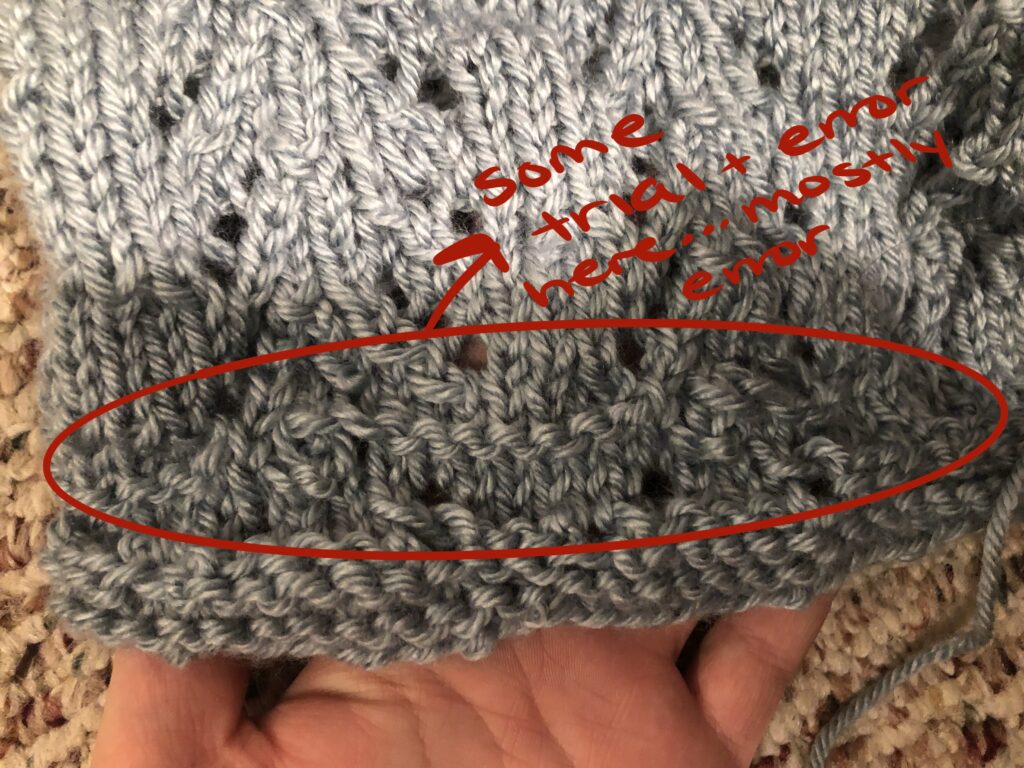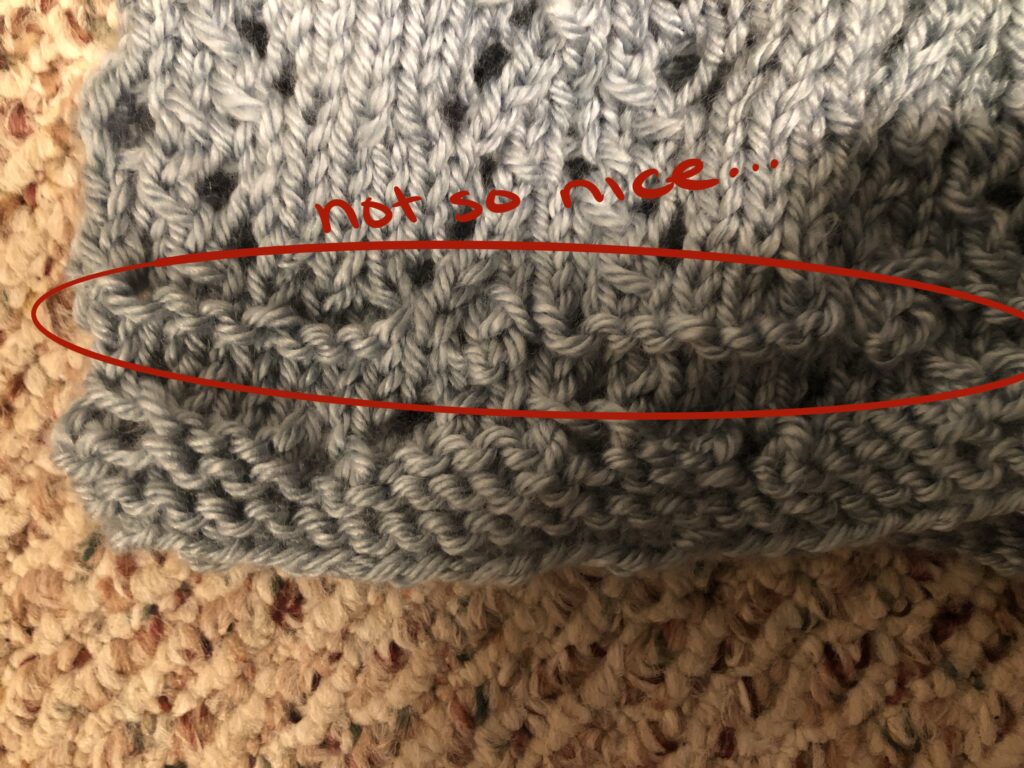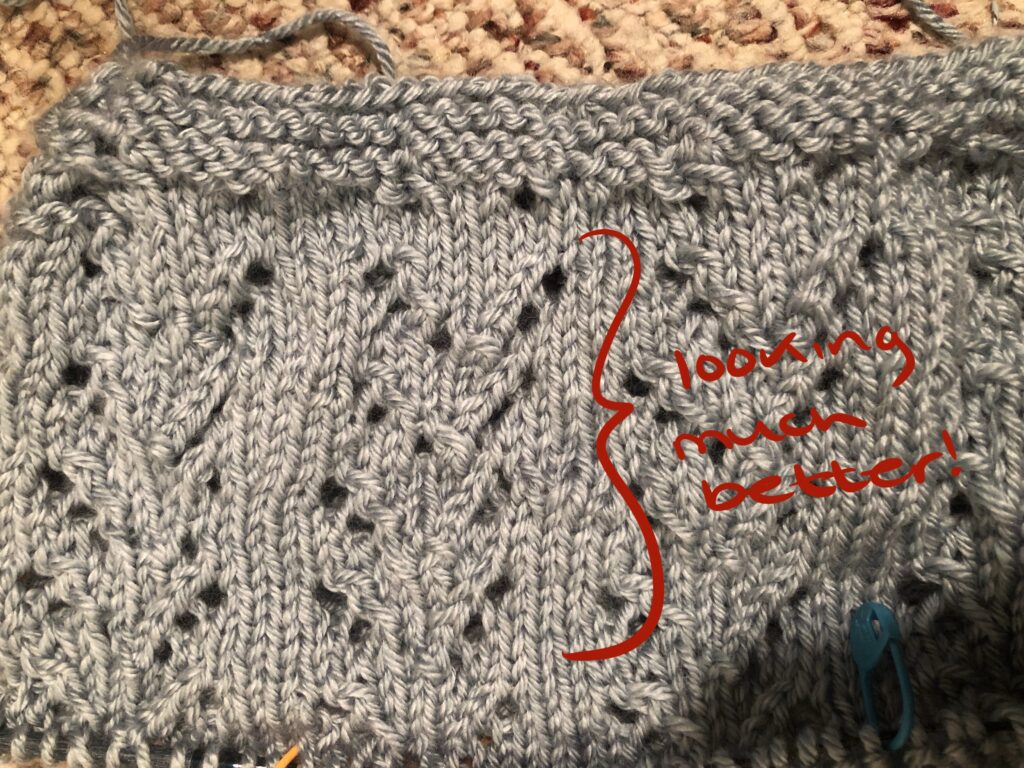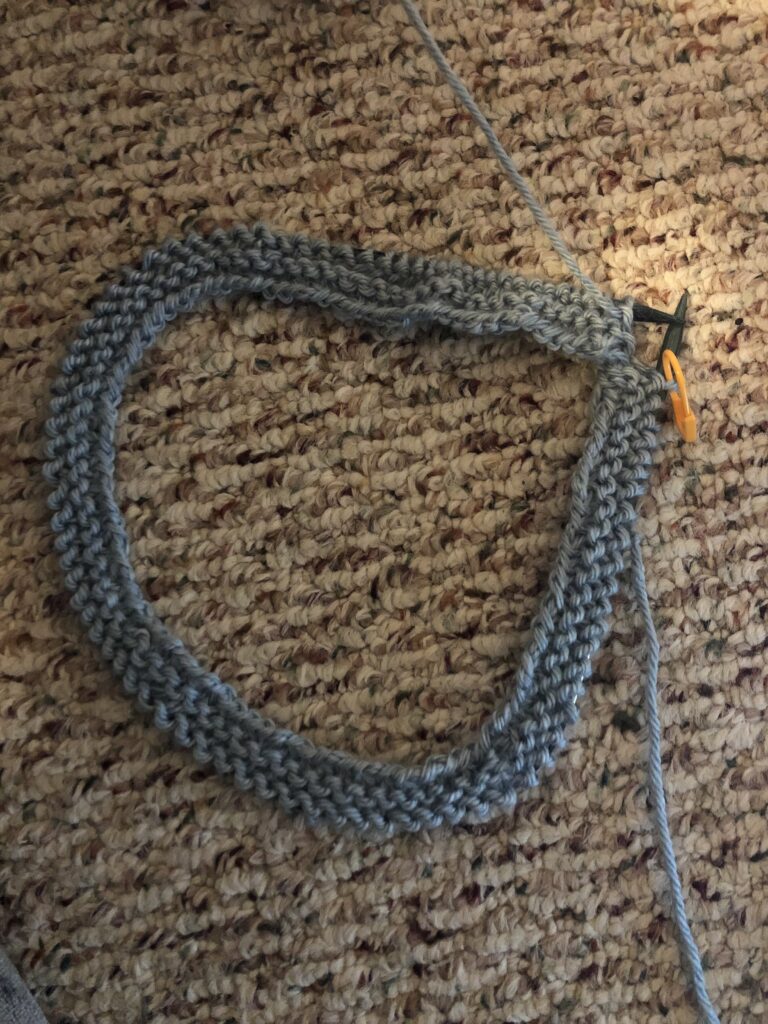The scarf is complete and now is fully dry as well. Take a look at some before and after blocking pictures:
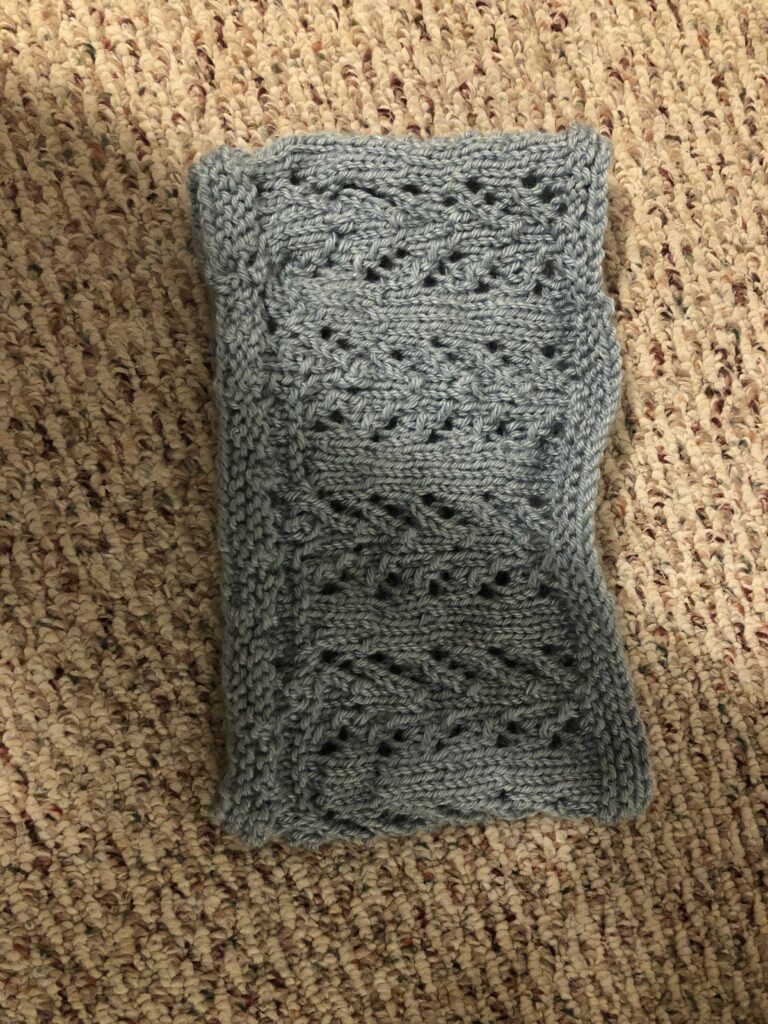
Before blocking 
After blocking
It’s difficult to see in the photos, but in real life there is a big difference between the two, so I’m glad I gave blocking a chance. I can definitely see how on certain projects it is almost a must to ensure you have a good final product.
I’m glad I went this route for my free inquiry, as knitting is one of those activities I really enjoy but often can’t find time for – especially when it comes to learning new skills. I will often just go back to what I am most comfortable knitting – scarves and headbands on large straight needles with no fancy patterns, but my knitting world feels a little bit bigger now. I’m most excited that I can use circular needles now, for two reasons. 1) I don’t have to limit myself to projects that are only on straight needles, and 2) I can finally use the circular needle set my parents bought me all that time ago (I’ve been told they weren’t cheap… so I’m happy they are starting to get some use!).
This scarf may be finished, but my inquiry into knitting is not. On to the next project! (I think I’m going to knit my brother-in-law some slippers next…)

